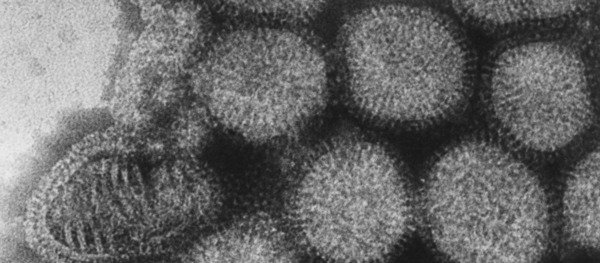
No vaccines against animal diseases without animal research
Bird flu became one of the most feared animal diseases in the 19th and 20th centuries. From the 1950s to the 1970s, Werner Schäfer carried out research on the pathogens underlying these and other infectious diseases in animals at the Kaiser Wilhelm Institute for Biochemistry in Tübingen. Some of the studies did not require research on live animals, as the viruses responsible for the diseases in question could be reproduced in chickens eggs or cell cultures and isolated from them. For others it was impossible to avoid research on animals, as the immunizing effect of individual virus proteins on the body could only be examined in the living organism. Today, millions of pets and livestock benefit from this research on chickens, mice and cats.

Laboured breathing, blue-tinged crests and combs, complete apathy, a high temperature – bird flu not only involves severe discomfort for wild birds and poultry, for most animals the infection is fatal. The disease was documented for the first time in 1878 in Italy. Since then, millions of chickens, turkeys, geese and ducks throughout the world have had to be culled in subsequent outbreaks.
Schäfer started to decode the origins of this dreadful animal disease in 1948 at the then Kaiser Wilhelm Institute for Biochemistry, which later became the Max Planck Institute for Virus Research. At the time, scientists were only able to isolate and visualize very few virus species in their pure form. Nonetheless, veterinarians who had recently returned from the War succeeded in isolating the virus and in producing images of it with an electron microscope.
Influenza virus – the root cause

In this way Schäfer discovered that the bird flu virus is closely related to the influenza A virus, and for this reason the disease is generally referred to as the bird flu today. He was one of the first scientists to realize that the avian influenza viruses form a reservoir, from which virus types can constantly emerge that also pose a threat to other species – including humans. For example, bird flu outbreaks claimed hundreds of human lives in the last century.
Based on his research, Schäfer was able to create a model of the structure of the bird flu virus. According to this model, the virus genome is surrounded by a sheath of fat molecules, from which a protein called the haemagglutinin protrudes like thorns. The virus needs this to be able to penetrate its host’s cells. The haemagglutinin also plays a crucial role in the immune response of the bird’s body: the immune system forms antibodies against the haemagglutinin which ensure that the virus is rendered harmless.
From the chicken egg to laboratory animal
It is relatively easy to reproduce the viruses in chicken eggs. For the research aimed at identifying the components of the virus to which the body reacts, however, Schäfer had to work with live laboratory animals: he discovered that he could protect chickens and mice against the viral infection if he injected them with haemagglutinin isolated from the viruses. He thereby managed to save the lives of 12 out of 31 inoculated mice, while 30 out of 31 non-inoculated animals died of the virus.
Schäfer concluded from this that vaccines can also be effective even if they only contain a single virus protein. This meant that it was possible to dispense with vaccines containing inactive or weakened virus particles and thus reduce the risk of an excessively strong immune response. Schäfer made crucial progress on an important principle here, upon which many vaccines used to protect humans against viruses today are based.
Carcinogenic viruses

Another of Werner Schäfer’s research fields involved viruses whose genome existed not only in the form of DNA but also as an RNA molecule, and which can cause cancer in birds and mammals. The best known of these oncoviruses – now referred to as retroviruses – is the AIDS pathogen HIV. Long before the discovery of the first human retrovirus, Schäfer suspected that such viruses can also infect humans. The methods he developed and the insights he gained later provided a basis for the research on HIV.
Schäfer analyzed the structure of the virus particles and isolated several proteins from their virus shell. He discovered that it was easy to detach some surface proteins from their foothold in the virus shell – a discovery that we now know applies to all retroviruses. Other researchers used this information to develop the first vaccine against feline leukaemia. This disease, which is still incurable, is among the most common fatal infections in cats. Schäfer’s research also provided the basis for the elimination of bovine leukaemia in the EU.
Immunisation against tumours in cats
Schäfer was able to avail of cell cultures again for the reproduction of the viruses. However, he also wanted to find out more about the immunising effect of the virus proteins he had discovered. To do this he started by isolating the gp71 protein from the feline leukaemia virus and injected it into healthy cats. Using serum obtained from their blood, Schäfer was then able to treat cats suffering from feline leukaemia and even cats with solid tumours: cats with tumours the size of an orange became healthy again within a period of six weeks. The antibodies formed by the body were effective across the species barrier and an antiserum against gp71 from a mouse virus can be used to treat different animal species.
Animal research is essential
As the research on the bird flu and feline leukaemia viruses shows, scientists always use the simplest model systems for their experiments – e.g. chicken eggs and cell cultures for the isolation of the virus. This helps them to minimise the use of laboratory animals. In some cases, however, research on live animals is unavoidable – for example, immune reactions can only be studied in the living organism. Researchers can gain valuable insights from such research, which benefits both animals and humans.


